David Bowie - David Bowie Is, Museum of Contemporary Art, Chicago
by Lisa Torem
published: 14 / 11 / 2014
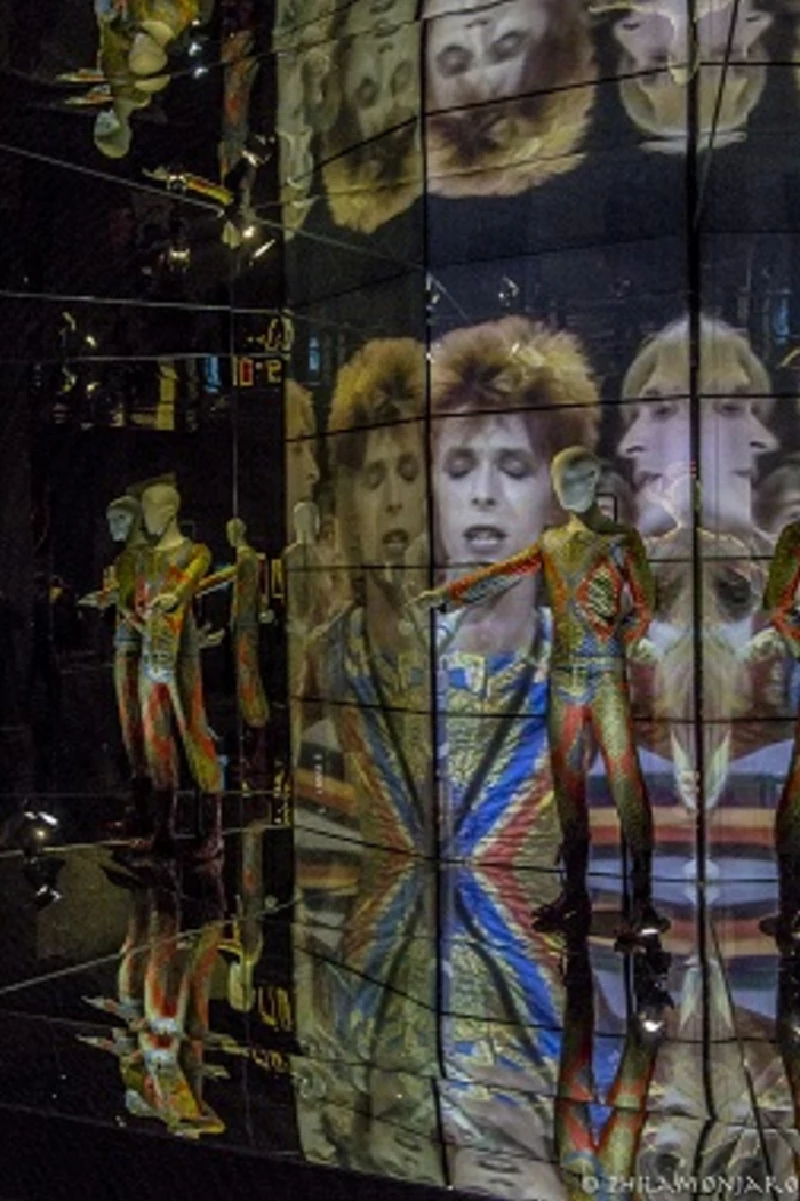
intro
Lisa Torem reflects upon the Museum of Contemporary Art in Chicago's new David Bowie exhibition, 'David Bowie Is'
You can't place the iconic David Bowie in a box- and that's exactly the point the Museum of Contemporary Art, Chicago, makes and drives home sharply and ceremoniously in its currently running exhibit that will end in early January, 2015. This ‘David Bowie Is’ exhibit, which includes all the artifacts from the London exhibit held at the Victory and Albert Museum recently, showcases Bowie's most enigmatic alter-egos: Ziggy Stardust, Aladdin Sane and the Thin White Duke, and allows the viewer to take in characters he propelled to fame in films such as ‘The Man Who Fell To Earth’, ‘The Hunger’ and more. If you just can't get enough of the glam rock star that morphed seamlessly into plastic soul, or the more reflective, sometimes strung-out contemporary composer who detoxed and collaborated with Lou Reed and Brian Eno, developed a fascination with Roxy Music/Bryan Ferry and holed away for three album projects steps from the Berlin Wall in the 1970s, this exhibit is essential viewing. But perhaps I'm getting ahead of myself. The exhibit actually begins with adorable photos of charming, cherubic David Jones. Time moves along and the young lad survives post-war, bombed-out Britain. As an adolescent, he's besieged by boredom and is referred to as gifted by teachers. A friend takes a swipe at him and one pupil becomes enlarged. Nevertheless, he's wildly photogenic with sculptured features, crystal blue eyes and a blond pompadour, when seen in an image of the Konrads, his earliest band. Bowie's drive to succeed and to master multiple skill sets starts early on. At Bromley Technical School, he eases into design study and breezes through the art and music curricula accumulating skills which will serve him well when he later grabs the gavel at his own concerts. Multiple, colourful sketches reflect his vivid imagination and it's thrilling to see how Bowie anticipated trends and conceptualized the “big picture”—the sketches were often primitive, but what he had in mind was completely comprehensible. The exhibition features many fan-friendly examples of handwritten lyrics. Bowie went through great pains to come up with the right word or phrasing during his prolific, fifty-year career. He even co-designed a program, the verbisizer, which spits out grammatically correct random phrases, which he utilized when facing writer’s block. On a related video, the Brixton-bred boy describes the process of retrieving brand new strings of words, exploring their meanings and then integrating them into song. At least one handwritten comment on a lyric sheet seems to have been directed at his then love interest, Ava Cherry, whom accompanied him as a backing singer on the ‘Young Americans tour’—the co-written Lennon/Bowie hit ‘Fame’ grew out of that album. Cherry was key in introducing Bowie to a wealth of theatre talent from the Harlem Apollo and pointing him in a soulful direction. Besides working with John Lennon, Bowie pursued many other collaborations, for example, with Queen etc., in the 1980s and developed a strong interest in Italian commedia dell’arte and in mime/dancer Lindsay Kemp. A related dramatic video, in which he, in whiteface, struggles with the elusiveness of fame by attempting to rip off an imaginary mask, is a tragically riveting must-see. What was unexpected for many visitors was the state-of-the-art Sennheiser audio. At the entrance each guest is given a pair of headphones, which works like a GPS system, albeit a personal one. When he/she enters a visual zone, where a video, for example, is shown, the music comes alive. What happens is that, unlike the typical museum setting where noises become a jarring blur, the sounds are sharp and focused. Jeff Touzeau, of Hummingbird Media, Inc., explains the process in more depth: “The headset is plugged into a wireless receiver/beltpack that automatically 'tunes in to' wireless audio signals (radio frequencies) that are broadcast by a central unit. As one moves through the exhibit, the beltpack automatically detects where the listener is and 'activates' the appropriate audio stream (there are several going on simultaneously). As a user moves closer to a display, they move into an 'audio bubble' that streams the content relevant to the display.” Touzeau also explained that this technology “has been used in other Bowie exhibits around the world: London, Sao Paulo, Toronto, Berlin and Paris.” Visually, too, the exhibit is extraordinary. In one area, where on video Bowie sings 'Space Oddity', his face is surrounded by black and a striking image of the earth floats to our right. As he croons over acoustic strums, about the loneliness astronauts surely feel, it's easy to feel goosebumps - we're submerged in glorious sound yet fully conscious of our desolate planet’s frailty as it appears to those towering above. Bowie worked hard on his image, borrowing from the best minds in the fashion industry. In a documentary of the V & A exhibit, Kansai Yamamoto greets museum goers and talks about how touched he was to see Bowie wearing one of his more outlandish outfits. Although the Japanese designer was initially stunned to find a grown man donning an outfit designed specifically for a woman, he was greatly moved the minute he saw Bowie’s lithe frame flaunting his dramatic designs. Chicago chief curator, Michael Darling, knew Chicago would be ripe for the show and when he conferred with V & A, co-curator, Geoffrey Marsh, the deal was quickly green lighted. Marsh had already developed a strong relationship with Chicago's theatre scene and predicted it would be a great match. And since the show will only appear in Chicago, and not anywhere else in the U.S., the community hopes visitors from throughout the country will stop by, especially a certain New Yorker... The final room, "the show moment," leaves one breathless. Video projections of Bowie performing hits like 'The Jean Genie' cover three walls and the ceiling. Bowie’s face is luminous. The camera pans across the excited audience and settles on the permanent grin of a police officer. These scenes were pulled from a special show Bowie created after 9/11. But, too, in scenes from the 1970s: a ‘Saturday Night Live’ episode and British ‘Top of The Pops’, Bowie’s enormous love of performance engages all of our senses. By the end of the exhibit, you will have seen Bowie in glitter, heels and pastel-painted lids as well as in simple khakis, casual shirt and shoulder-length hair. It’s astounding to think that, despite changing his style of music and fashion repeatedly over the decades, he has always managed to generate new ideas and satisfy multi-aged audiences. And, even though, the mood gets tense when Bowie announces his last day of the tour and last concert, to a surprised audience and an even more surprised band, the overall theme of the exhibit is generally upbeat and inspirational. That said, there is no attempt to sugar coat Bowie's life or categorise his projects rigidly for the sake of chronology. It’s more like a stroll through his ever-creative mind than a fact-packed, history lesson. The larger-than-life exhibits contrast intimate cul-de-sacs where stacks of LP covers span his career. Most memorable is ‘The Man Who Sold the World’ (1970): Bowie, draped in a long dress on that iconic cover, has been compared to glamorous Lauren Bacall. There’s one hilarious enlargement of the ‘Diamond Dogs’ cover, on which Bowie seems perfectly calm despite a gigantic dog leaping into the air. There’s Bowie with striking ‘Aladdin Sane’ make-up - whether dolled up head to toe, or posing demurely like a mod schoolboy, these covers inspire an immediate and occasionally outrageous reaction. It took great thought, perseverance and manpower to recreate V & A's unique exhibit for this one-off Chicago setting. V & A co-curator Geoffrey Marsh, there for the press event and panel discussion with Chicago chief curator, Michael Darling, despite knowing full well the back-story about every artifact, thoroughly enjoyed explaining the details to intrigued visitors, pouring out of the exhibit prior to closing. Is this exhibit solely for Bowie fans? Not a chance. You don’t even have to know the chorus to ‘Fame’ to enjoy it because there are so many elements here that are fun, entertaining and cleverly implemented, plus it trots on a universal theme - our innate human hunger for creativity and individuality. David Bowie reached for the great, elusive beyond in every lyric, costume and riff. Using mime, he initiated a new dialogue, banishing us from the ennui of language over usage. A performer must engage his/her entire being: physically, mentally and emotionally to be taken seriously by Bowie’s camp, it seems. Up and coming performers, beware! He has set the bar high, but always includes we outsiders in his exploits and by coming across the pond, ‘David Bowie Is’ has made the ultimate splash. Photos by Philamonjaro www.philamonjaro.com
Article Links:-
http://www.philamonjaro.comBand Links:-
http://davidbowie.com/blackstar/https://www.facebook.com/davidbowie
https://twitter.com/davidbowiereal
https://www.youtube.com/user/DavidBowieVEVO
Picture Gallery:-
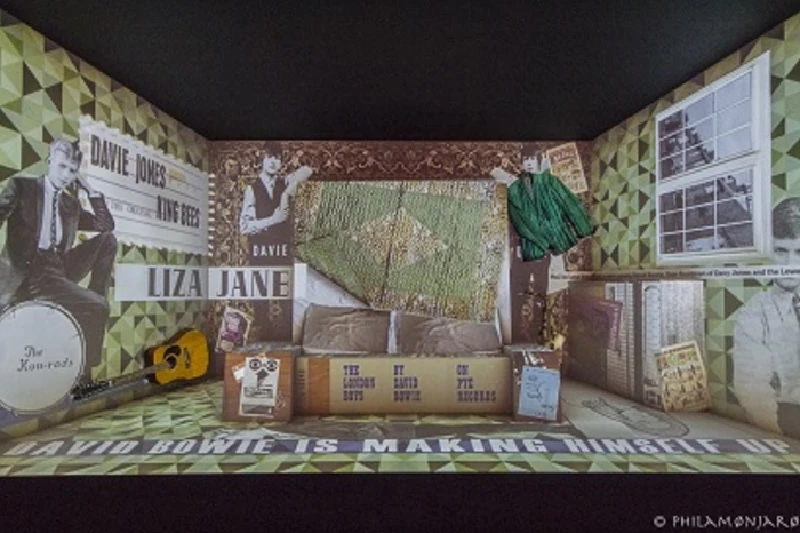
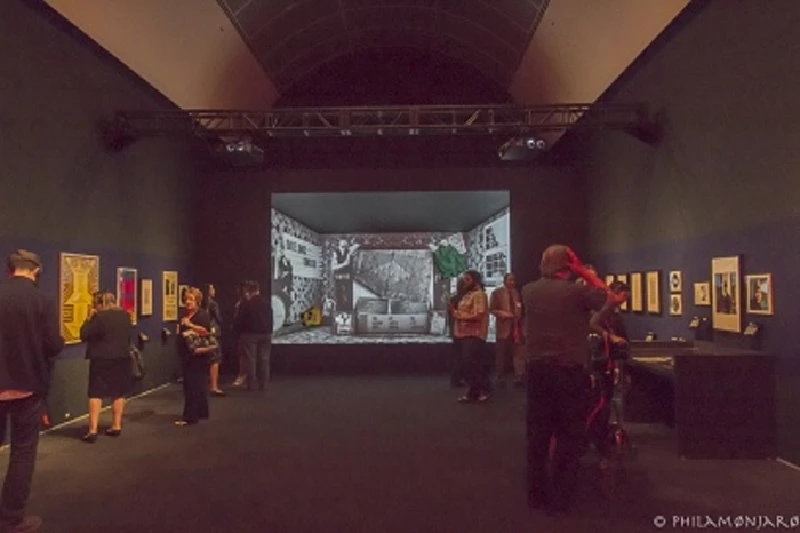
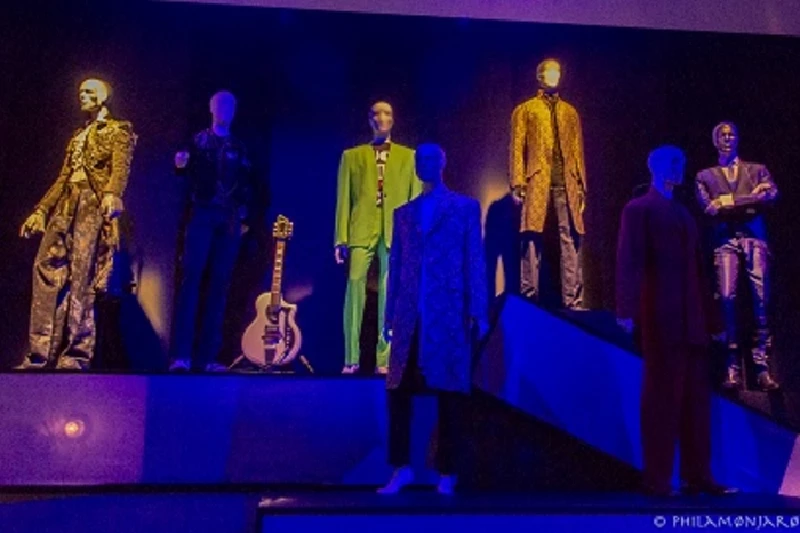
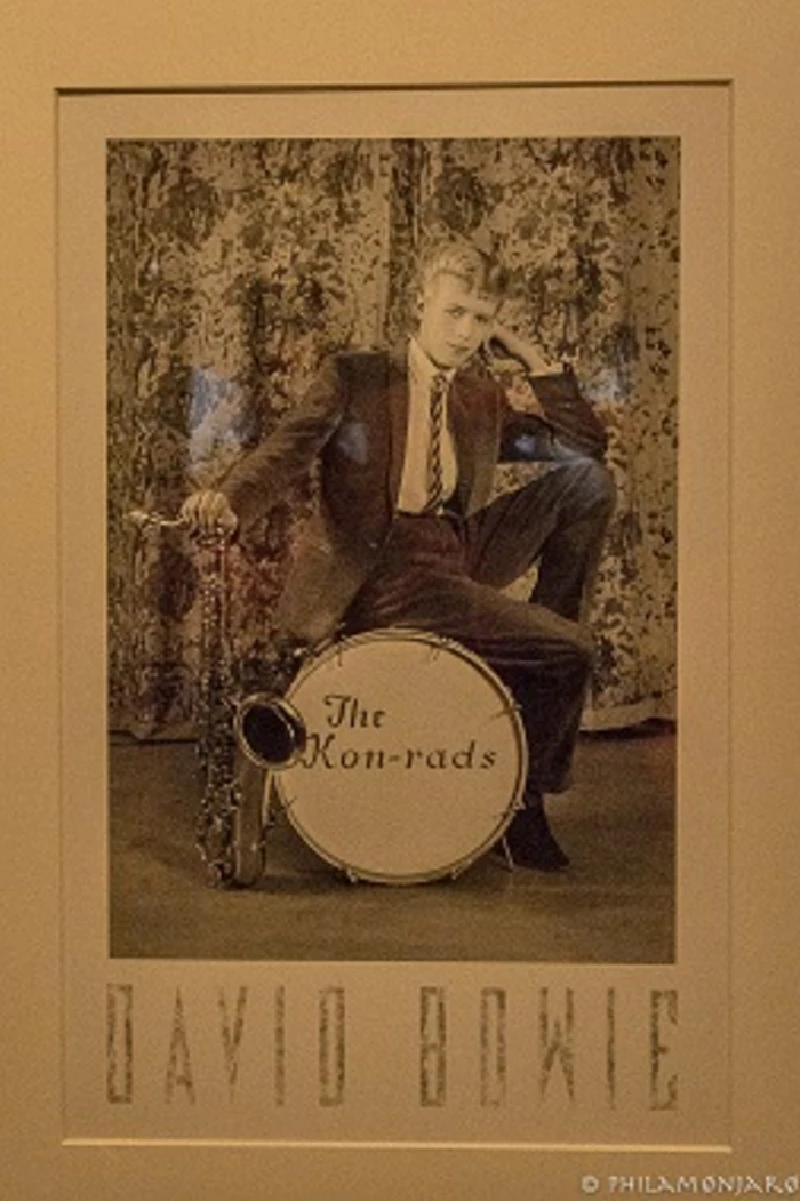
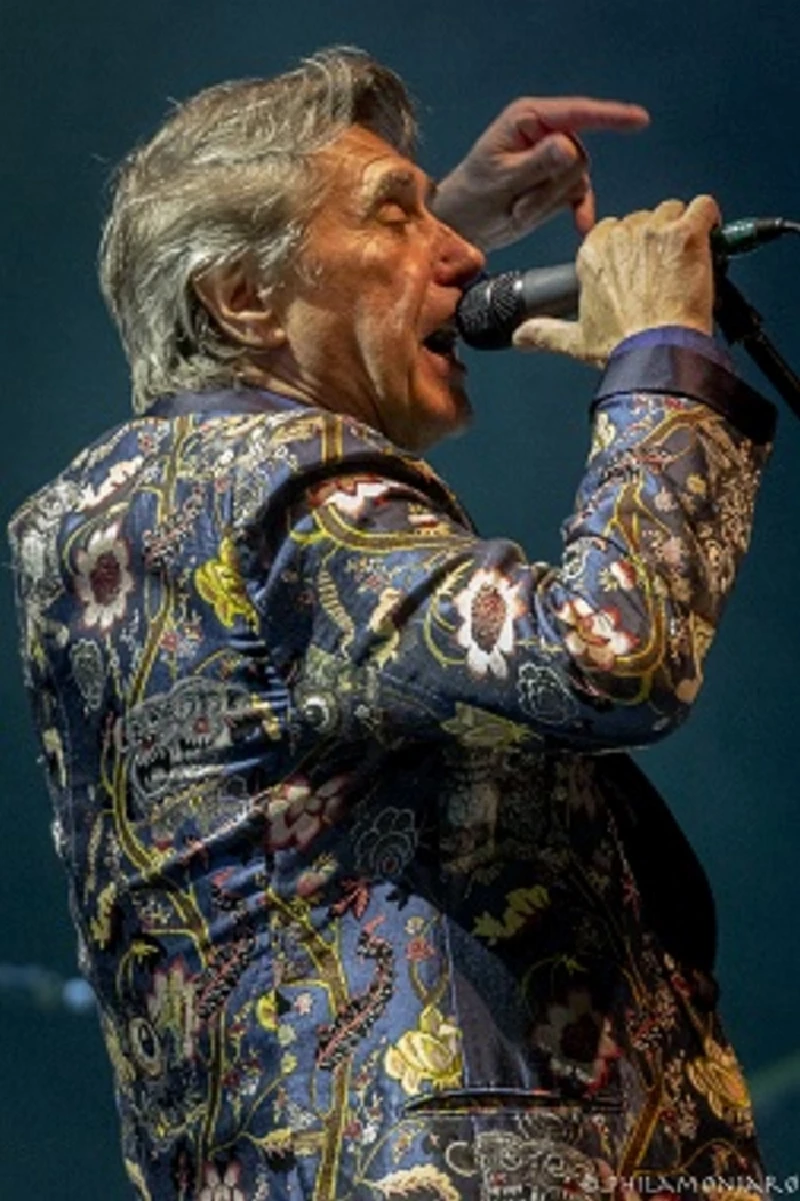
profiles |
|
Blackstar (2016) |

|
| Anthony Strutt evaluates and reflects upon 'Blackstar', David Bowie's final album |
| 1947-2016 (2016) |
| Writers and Photographers' Tributes (2016) |
favourite album |
|
Toy (2022) |
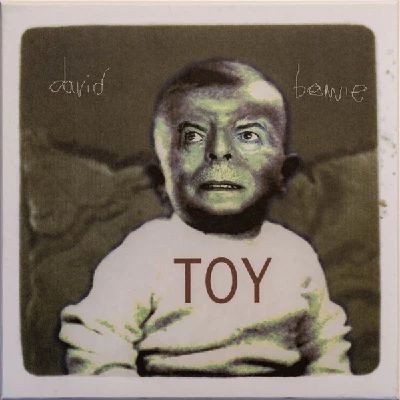
|
| In our Re:View section, in which we look back at albums from the past, Nick Dent-Robinson is excited that David Bowie’s ‘Toy,’ previously soldas part of a box set format will be released in its own right. |
| Station to Station (2016) |
features |
|
Discography Hagiography Part 2 (2023) |
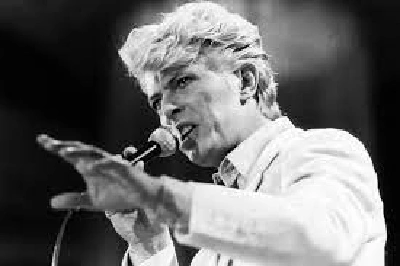
|
| In the second in our series ‘Discography Hagiography’, in which we will be providing a disc-by-disc evolution of music’s greats, Mark Rowland begins by reflecting upon the post 1970’s career of David Bowie, |
| Discography Hagiography Part One (2023) |
| The Image That Made Me Weep (2020) |
| Vinyl Stories 1 (2016) |
| Vinyl Stories 2 (2016) |
| Manchester and Exeter, 1972 (2016) |
| Ten Songs That Made Me Love... (2016) |
| David Bowie. Hanover Grand, London, 1997 (2013) |
soundcloud
reviews |
|
The Next Day (2013) |
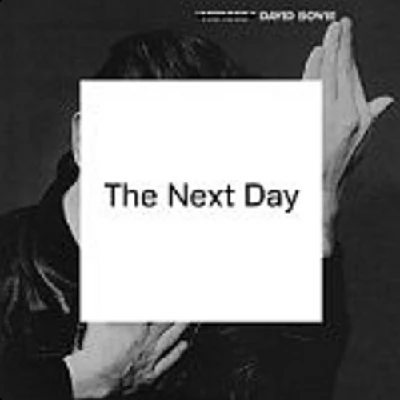
|
| First-rate and excellent return to form in first album in a decade from David Bowie |
| Where Are We Now? (2013) |
most viewed articles
current edition
Carl Ewens - David Bowie 1964 to 1982 On Track: Every Album, Every SongArmory Show - Interview with Richard Jobson
John McKay - Interview
Colin Blunstone - Thalia Hall, Chicago, 16/7/2025
Billie Eilish - O2 Arena, London, 10/7/2025
Bathers - Photoscapes 1
Visor Fest - Valencia, Spain, 26/9/2025...27/9/2025
Loft - Interview
Sir Tim Rice - Interview
Robert Forster - Interview
previous editions
Manic Street Preachers - (Gig of a Lifetime) Millennium Stadium, Cardiff, December 1999Heavenly - P.U.N.K. Girl EP
Beautiful South - Ten Songs That Made Me Love...
Oasis - Oasis, Earl's Court, London, 1995
Peter Perrett - In Dreams Begin Responsibilities Interview Part One
Boomtown Rats - Ten Songs That Made Me Love....
Coldplay - Wembley Arena. London, 16/8/2022
Prolapse - Interview
Pixies - Ten Songs That Made Me Love...
Trudie Myerscough-Harris - Interview
most viewed reviews
current edition
Davey Woodward - Mumbo in the JumboSick Man of Europe - The Sick Man of Europe
Lucy Spraggan - Other Sides of the Moon
Amy Macdonald - Is This What You've Been Waiting For?
Phew, Erika Kobayashi,, Dieter Moebius - Radium Girls
Bush - I Beat Loneliness
Suzanne Vega - Flying With Angels
Alice Cooper - The Revenge of Alice Cooper
Blueboy - 2
Cynthia Erivo - I Forgive You
related articles |
|
Tony Visconti: Interview (2019 |
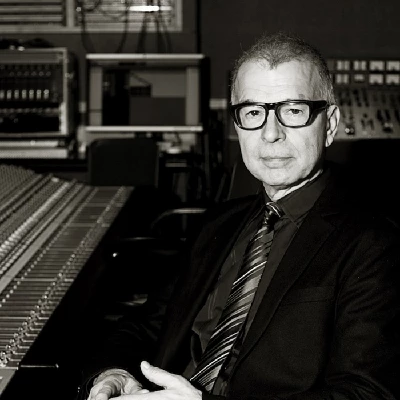
|
| Seminal producer Tony Visconti talks about working with drummer Woody Woodmansey with Holy Holy, recording with David Bowie in the studio and his legacy. |
| Woody Woodmansey: Interview (2018) |
| Woody Woodmansey: Feature (2018) |
| Celebrating David Bowie: Live Review (2018) |
| Glenn Gregory: Interview (2015) |
Pennyblackmusic Regular Contributors
Adrian Janes
Amanda J. Window
Andrew Twambley
Anthony Dhanendran
Benjamin Howarth
Cila Warncke
Daniel Cressey
Darren Aston
Dastardly
Dave Goodwin
Denzil Watson
Dominic B. Simpson
Eoghan Lyng
Fiona Hutchings
Harry Sherriff
Helen Tipping
Jamie Rowland
John Clarkson
Julie Cruickshank
Kimberly Bright
Lisa Torem
Maarten Schiethart